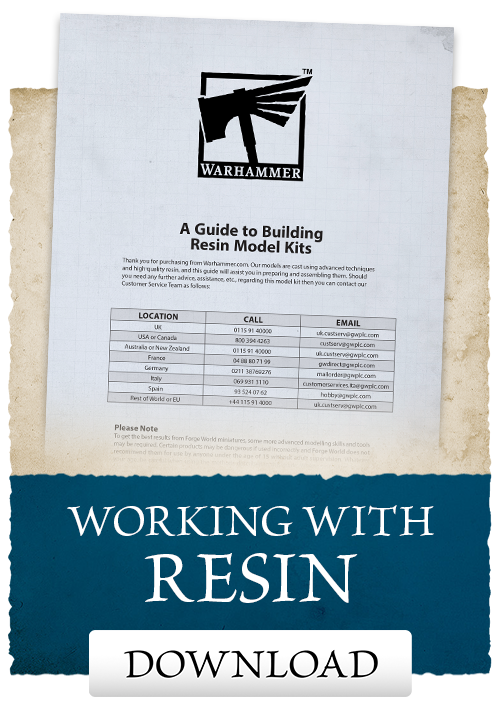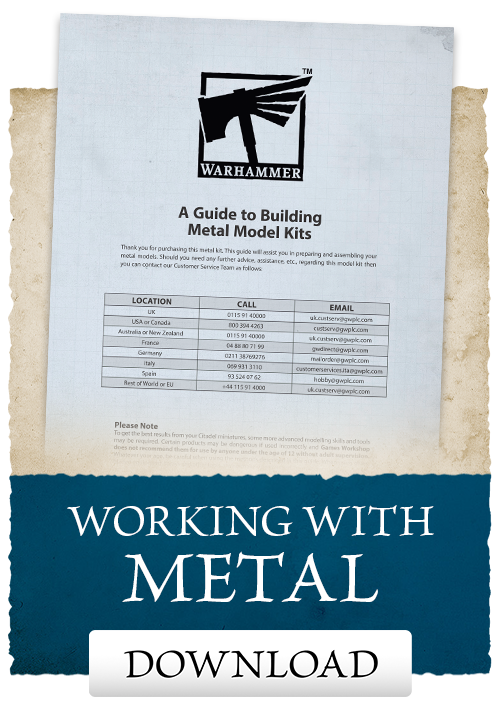Warhammer: The Old World is a project designed for fans of the rich heritage of the Warhammer hobby. With a refined take on old-school rank’n’flank gameplay and a mixture of new and classic miniatures, it’s steeped in nostalgia – right down to the materials used to create your armies.

With so many miniatures returning, the Old World has three major mediums: plastic, Forge World resin, and metal. Though modern Warhammer sprues are a little more densely packed with parts we should all know how to work with plastic, but resin and metal might be a little more of a challenge. Either you’re too new to the hobby to remember the quirks of metal miniatures, or it’s been such a long time that you’ve forgotten some of the finer points.*
Fortunately, the Citadel Design Team have written a couple of comprehensive guides to explain the ins and outs of resin and metal. You can download them here:
 |  |
As you can see, these guides are comprehensive, and if you’re only working with smaller miniatures or characters, you probably won’t need the equipment to clip, saw or pin them. In general, both resin and metal models come with little spurs (called ‘flash’) left over from the casting process, and the main trick is removing them – while making sure you’re not slicing off part of the miniature!

Metal miniatures tend to have mould lines that should be shaved off, while resin has little shims in gaps between details. Additionally, resin miniatures need to be washed and gently scrubbed in a bowl of warm soapy water before assembly and painting. We also recommend wearing a mask if you’re cutting, trimming, or filing in either medium. You’ll also need superglue for both.
There are plenty of other tips contained in these guides – and the important thing is not to be afraid. These are wonderful miniatures, and they don’t need more work than you’d put into cleaning off the burrs or mould lines on your plastic soldiers.
* We are speaking from experience here…


































